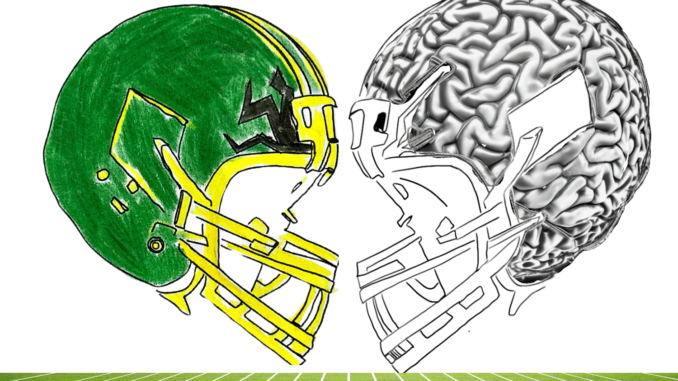
By Madison Young
Staff Writer
As the issue of athlete safety continues to dominate headlines, particularly in professional leagues like the NFL and NHL, the urgency for effective concussion protocols in high school sports cannot be overstated. These leagues have faced immense scrutiny over their handling of concussions, and it is vital for our school to learn from their experiences.
“Our goal is to ensure the safety of our student-athletes,” school trainer Ryan Kunihiro said. “We follow the CDC guidelines, and any player showing symptoms of a concussion must be removed from play immediately. We take every precaution to protect our students and guide them through the recovery process.”
On the other side, NFL players like Tom Brady have admitted to playing through concussions and head injuries, driven by the pressure to perform. Stories like his, along with those of countless others in the NFL, illustrate the dangerous mentality that “playing through the pain” is heroic or admirable. This mindset is especially concerning at the high school level, where young athletes often lack the knowledge and experience to recognize the severity of a concussion.
“It’s important for us to know the signs of a concussion and not to push ourselves too hard,” Varsity football player Will Nammack said. “Sometimes, there’s pressure to keep playing, but we have to prioritize our health.”
Coaches play an essential role in reinforcing concussion protocols. Their leadership can either determine or undermine safety measures. It is imperative that coaches not only recognize concussion symptoms but also promote a field of safety and transparency. They should follow the examples set by professional sports teams, which have begun to prioritize player health over wins.
“Our coaching staff is trained to recognize the signs of a concussion, and we always are on the side of caution,” assistant football coach Ray Lee said. “If a player shows any symptoms, they are pulled from practice or games. It’s essential for us to protect our players and promote a culture of safety.”
Despite our school’s efforts, there’s still room to improve how we handle concussion protocols. Hosting regular meetings with parents, athletes, and coaches could reinforce the need for strict safety guidelines. Steps like these would help create a place where player safety remains the top priority.
“We look out for each other on and off the field,” Nammack said. “If someone seems off, we need to speak up. It’s not just about one person, it’s about the whole team’s health.”
Our school has made strides in setting up concussion protocols, but staying consistent in reinforcing them is crucial. Keeping athletes safe means staying true to the strict guidelines. By creating a place where players feel open to speaking up, we can make an impact on reducing concussion risks.

Leave a Reply